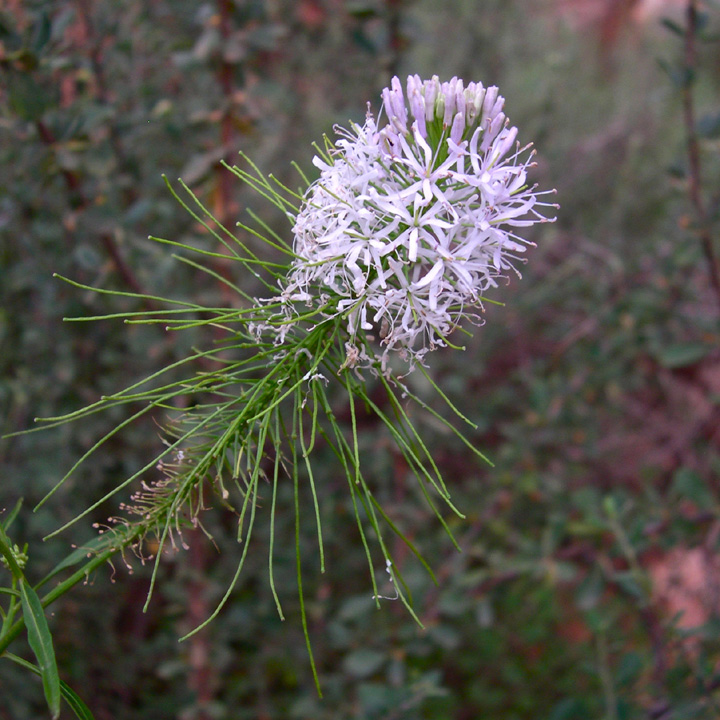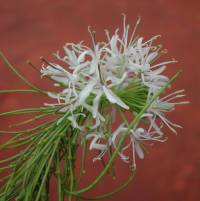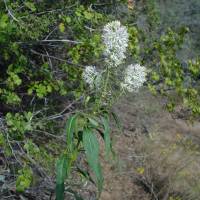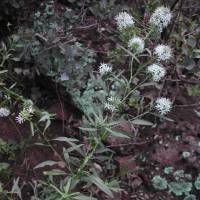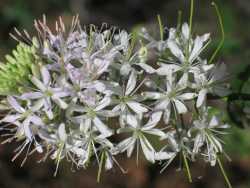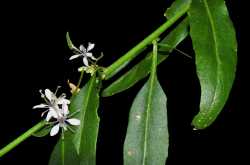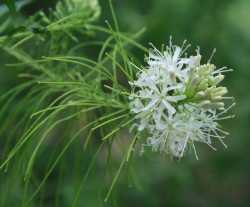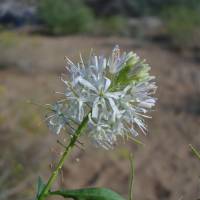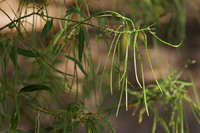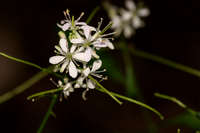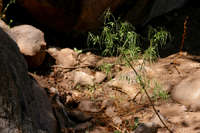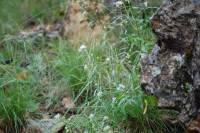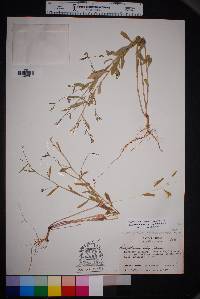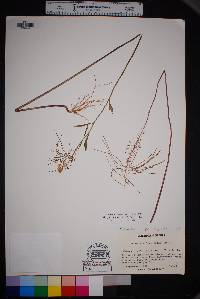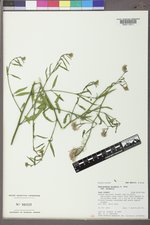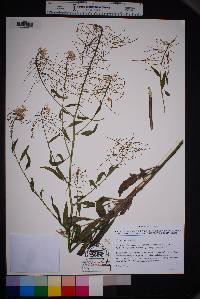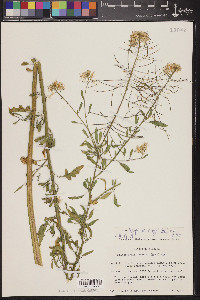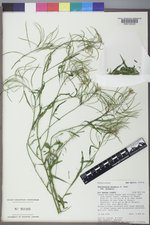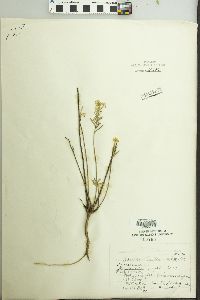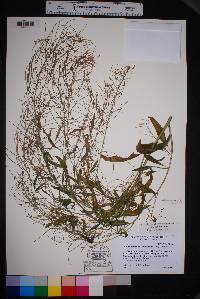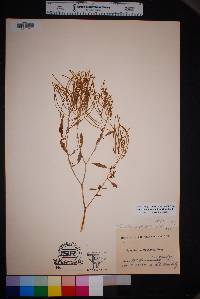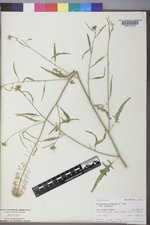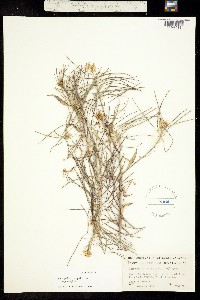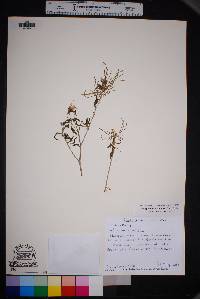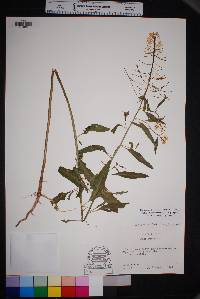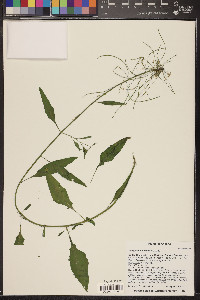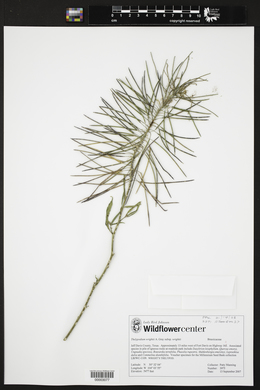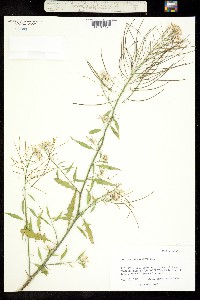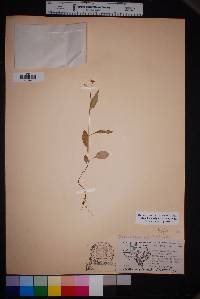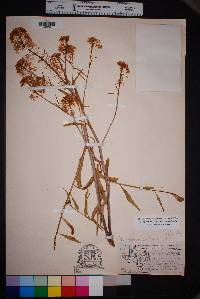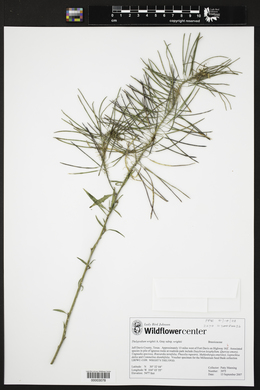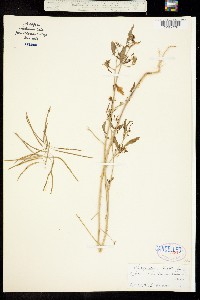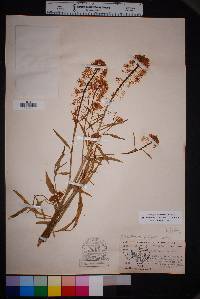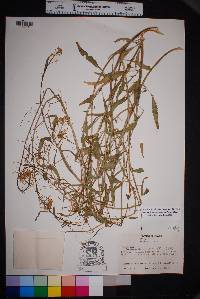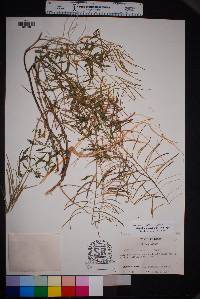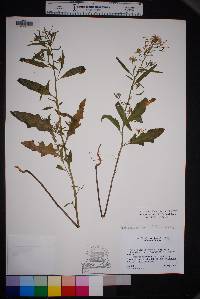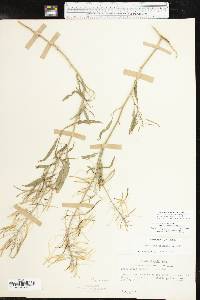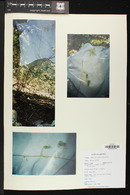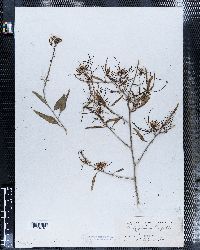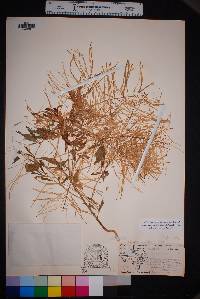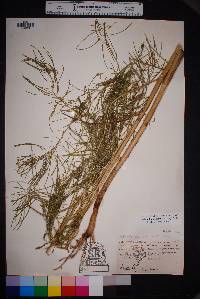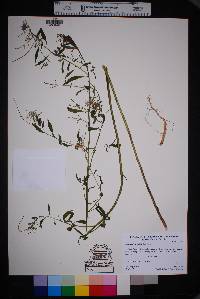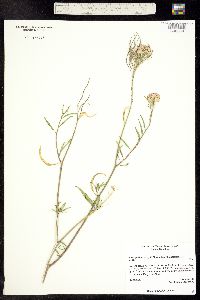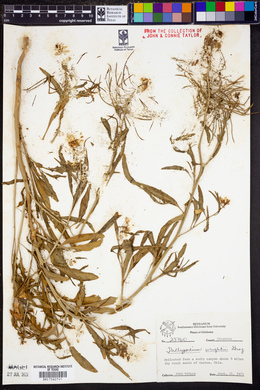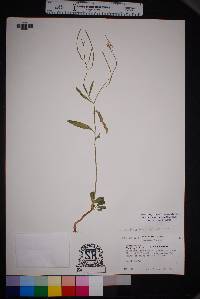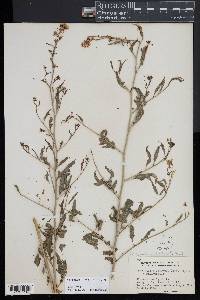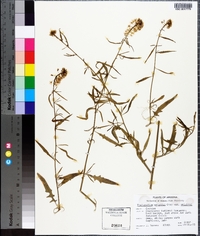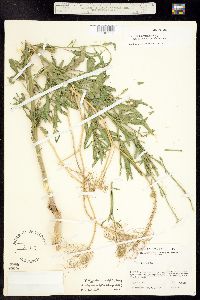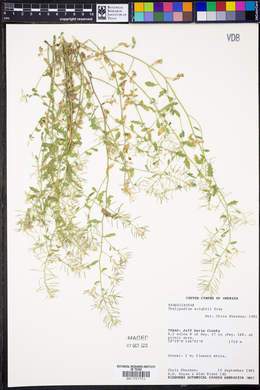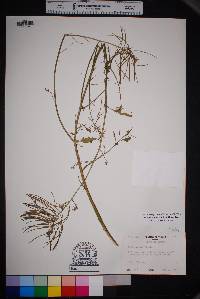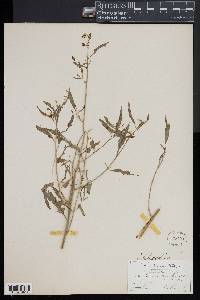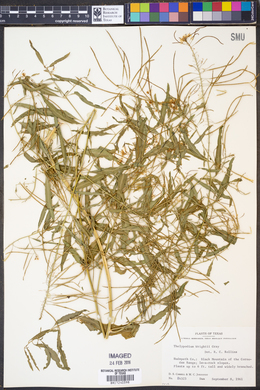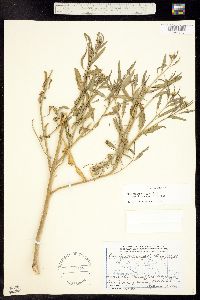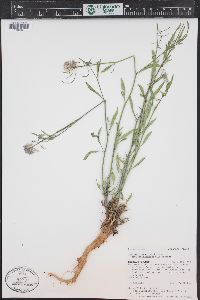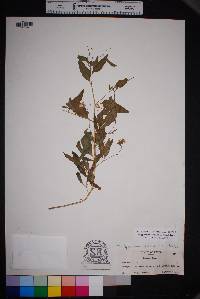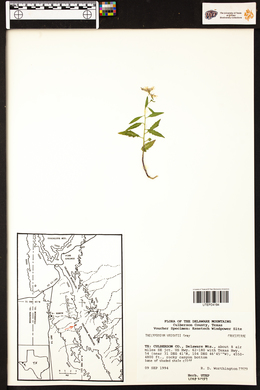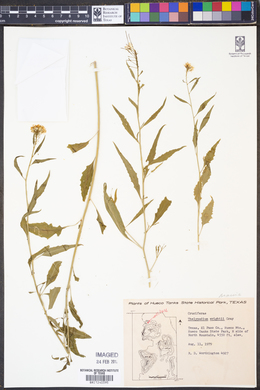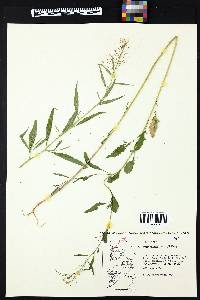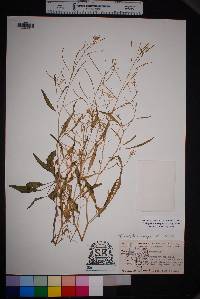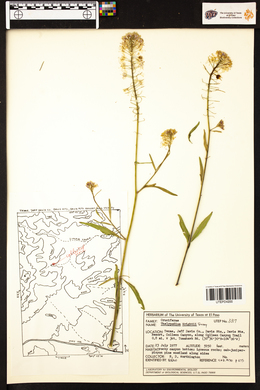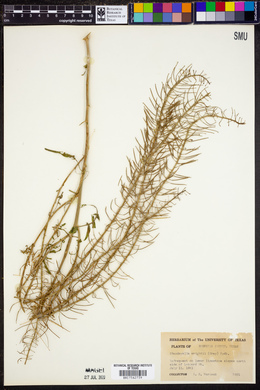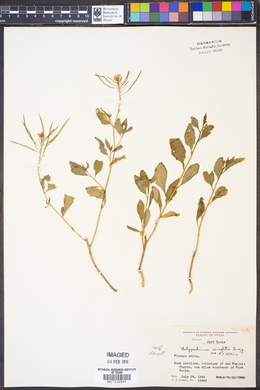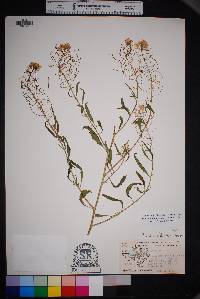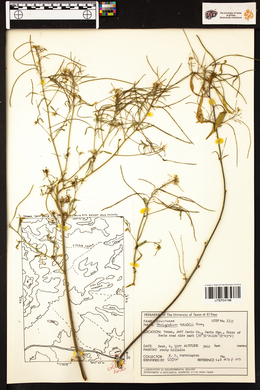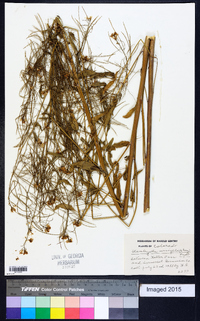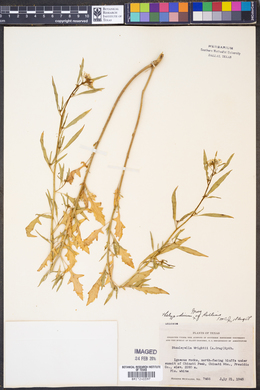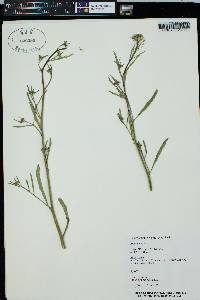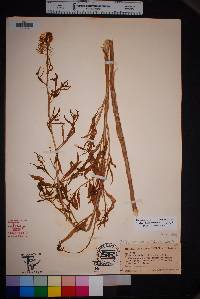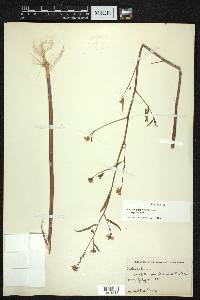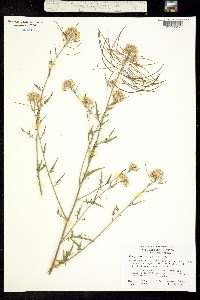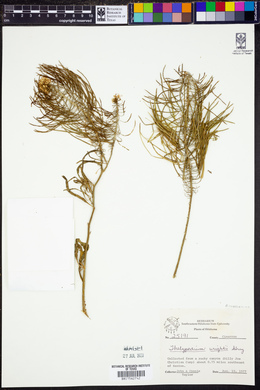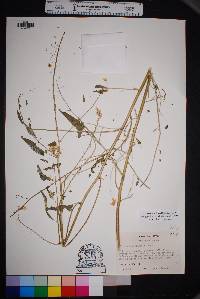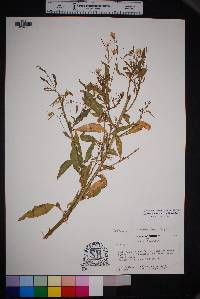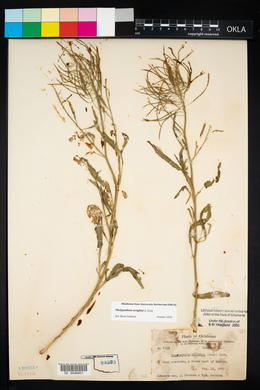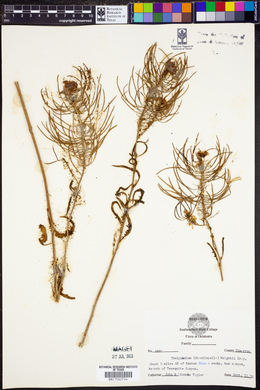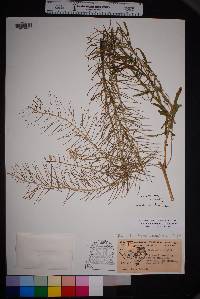Thelypodium wrightii
|
|
|
|
Family: Brassicaceae
Wright's Thelypody, more...Wright's thelypody, wright stanleyella, Wright thelypody, Oklahoma thelypody
[Stanleyella wrightii (Gray) Rydb., moreStanleyella wrightii var. tenella (M.E. Jones) Payson, Thelypodium wrightii subsp. oklahomense Al-Shehbaz, Thelypodium wrightii subsp. oklahomensis , Thelypodium wrightii subsp. wrightii , Thelypodium wrightii var. oklahomensis Al-Shehbaz] |
Biennials; slightly glaucous, glabrous. Stems branched distally, (6.5-)9.5-22.5(-28) dm. Basal leaves (and proximal cauline): petiole (2-)4.5-8.5 (-13.7) cm; blade often lanceolate, sometimes oblanceolate in outline (lateral lobes oblong to linear or deltate), (6.5-)9.5-22.5(-28) cm × 28-55(-75) mm, margins pinnately lobed or lyrate (lobes entire or denticulate). Cauline leaves petiolate; blade lanceolate to linear-lanceolate, 3.5-8.5(-13.5) cm × 7-14(-23) mm, margins usually entire or dentate, rarely lobed. Racemes somewhat lax, considerably elongated in fruit. Fruiting pedicels horizontal to divaricate, sometimes reflexed, straight or curved, sometimes secund, slender, (5-)7-13(-17) mm, slightly flattened at base. Flowers: sepals spreading or ascending oblong to linear, (3-)4-6(-7) × (0.8-)1-1.3(-1.5) mm; petals usually white, rarely lavender, linear or oblong, 4-7.5(-9) × 1-1.8(-2) mm, margins not crisped, claw not differentiated from blade (base sometimes clawlike, to 2 mm, widest at base); nectar glands confluent; filaments equal, (3-)3.5-6.5(-8.5) mm; anthers (1-)1.5-2.5(-3) mm, circinately coiled; gynophore 0.2-2(-5) mm. Fruits horizontal or reflexed, torulose, straight to somewhat curved, flattened, (2.5-)3.8-7.4(-9) cm × 1-1.2(-1.5) mm, (replum not constricted between seeds); ovules 76-128 per ovary; style usually clavate to subclavate, rarely cylindrical, (0.5-)0.8-2(-3) mm. Seeds 0.7-1.3 (-1.5) × 0.5-0.8 mm. Flowering (Mar-)Jun-Oct. Rock crevices, shady slopes, rocky hillsides, canyons, stream banks, creek beds, pinyon-juniper communities, oak woodlands; 1200-2300 m; Ariz., Colo., N.Mex., Tex., Utah; Mexico (Baja California, Chihuahua, Coahuila, Hidalgo). Study of extensive material that has accumulated during the past three decades reveals that the differences between subsp. oklahomensis and subsp. wrightii, which are based solely on variations in gynophore and fruit lengths, do not hold as clearly as previously thought (I. A. Al-Shehbaz 1973; R. C. Rollins 1993).
Martin and Hutchins 1980, Kearney and Peebles 1969, Heil et al. 2013, FNA 2010 Duration: Perennial Nativity: Native Lifeform: Forb/Herb General: Biennial to perennial herb from a taproot, 60 cm to 1 m tall, occasionally up to 2 m; stems usually single, unbranched or branched above the middle; herbage glabrous and slightly glaucous. Leaves: Basal and cauline leaves petiolate; basal leaves 10-15 cm long, lyrate-pinnatifid; stem leaves becoming smaller upward, linear-lanceolate, pinnately lobed to toothed or entire. Flowers: White and showy in dense terminal racemes, the racemes becoming quite elongated in fruit; pedicels widely spreading to somewhat reflexed; sepals 4, oblong, 3-5 mm long; petals 4 in a cross formation, 5-7 mm long, white or pinkish. Fruits: Capsules linear, 5-7 cm long, constricted between the seeds, with the pedicels sticking straight out from the stems (spreading) and the capsules drooping; seeds 1 mm long, ovoid or oblong. Ecology: Found on slopes in rich soil from 2,500-7,500 ft (762-2286 m); flowers March-November. Distribution: AZ, NM, UT, CO, TX Notes: This species is quite distinctive due to its large showy clusters of white, 4-petaled flowers; its tall upright growth form; and its abundant, long, slender seed pods which stick out in all directions from the stems and droop slightly because of how long they are. It resembles a white-flowered form of Prince's Plume (Stanleya pinnata). T. integrifolium differs by having sessile stem leaves (this species has leaves on petioles) and lower stem leaves that are entire, not pinnately lobed. T. laxiflorum has fewer flowers per raceme; shorter seed pods, 2-6 cm long; and the plants are often pubescent on the lower stems and leaves. Ethnobotany: Used for swellings, as an eye medicine, a sedative, and as food; also planted as a cover crop in conjunction with beans. Editor: SBuckley 2010, AHazelton 2017 Etymology: Thelypodium is from Greek thelys, female and pus, foot, referring to the "little foot," or gynopore, of the ovary; wrightii honors William Greenwood Wrightii (1831-1912) an early California lepidopterist. |
|
|
|

